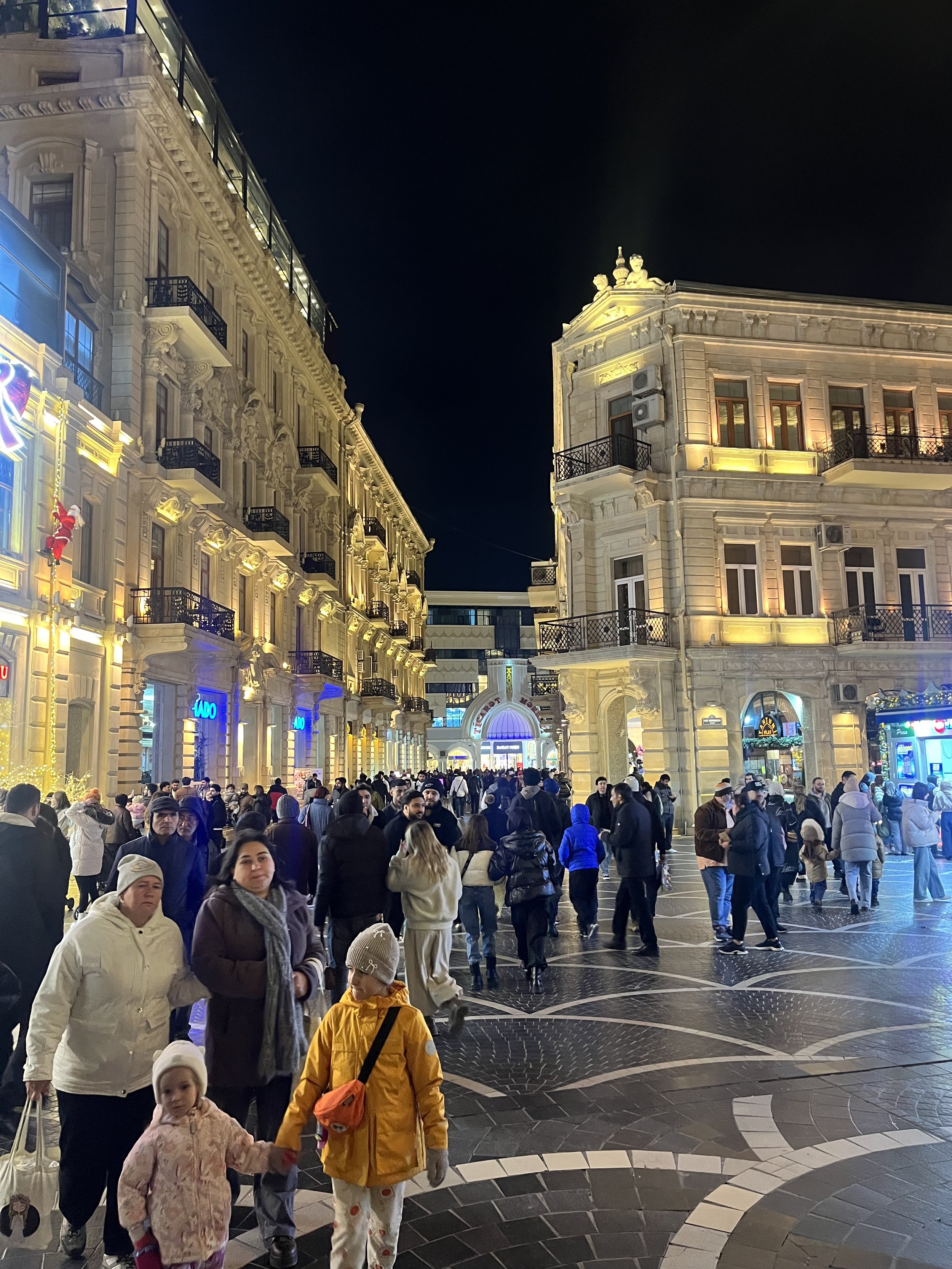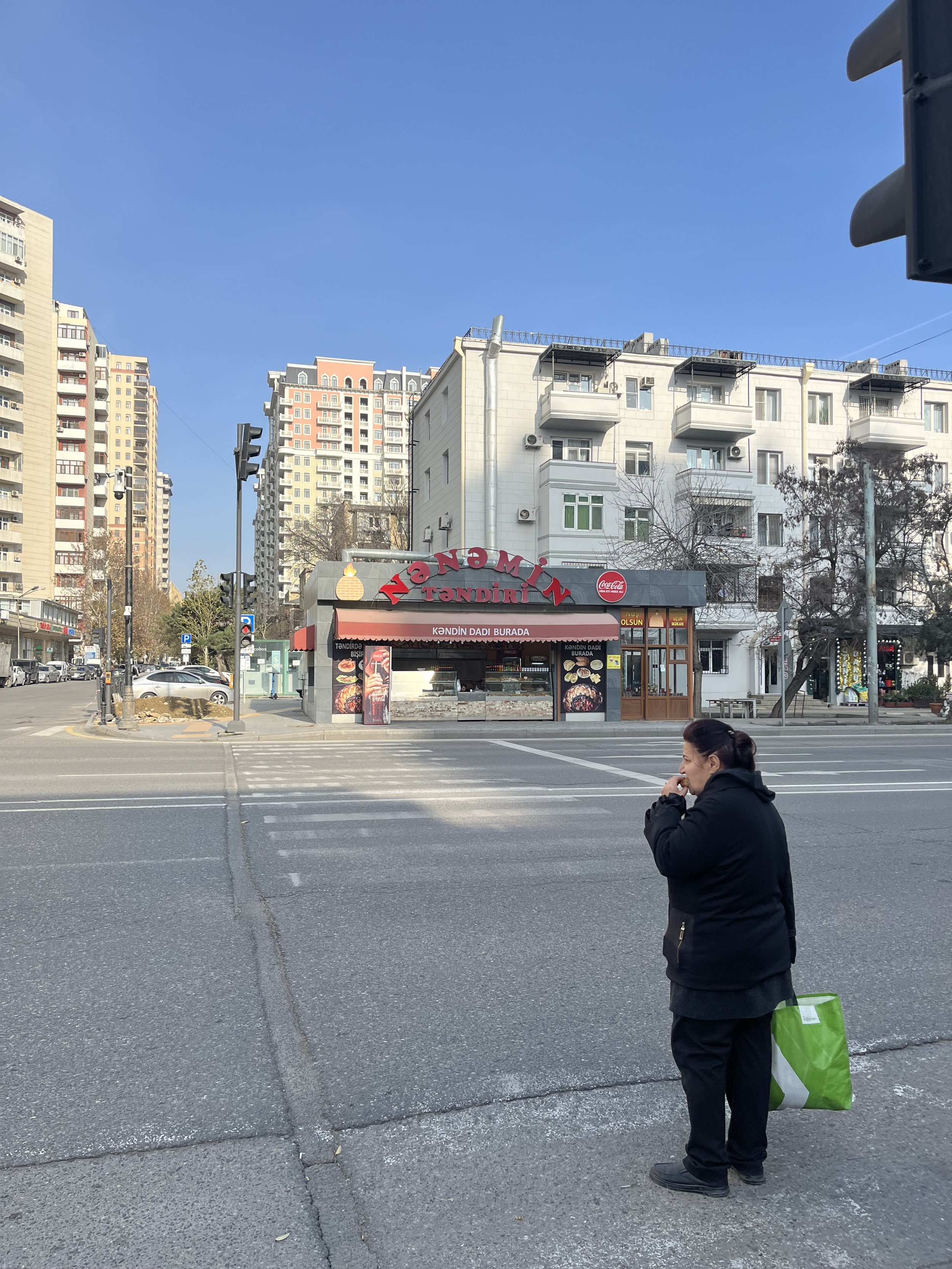(Scroll down to read in English)
アゼルバイジャンで初めてボクシングジムに通った話。
アゼルバイジャンに引っ越す前の私はモザンビークにいて、日々畑に立ち、様々な作業をしていた。
肉体労働が生活の基礎にあった。
アゼルバイジャンの首都バクーに引っ越して、生活が一変。
日々ウォーキングはできても、意図的に運動しないと、体が鈍っていく日々。
便利な世の中、美味しいご飯と甘いもの。
よし、運動しよう、と思い立って、せっかくならずっと挑戦してみたいと思っていたボクシングをやってみることにした。
これまでボクシングや格闘技はずっとうっすらとフォローしていたが、モンスターと呼ばれる日本が誇る世界最強ボクサー井上尚弥のボクシングを見てさらに深くハマるようになった。
日本には井上をはじめとして素晴らしいボクサーが沢山いるし、階級を上げると世界中にさまざまな猛者がいる。
それぞれファイトスタイルが違ったり、ストーリーがあったりして、おもしろい。
相手を拳で倒すというシンプルなスポーツ。
テクニックとフィジカルとメンタルの真っ向勝負。
実は2017-18年にイギリス留学をしていた際に、ボクシングに触れたことがある。
大学のあった町の体育館で毎週ボクシング教室が行われていて、1回確か2ポンドぐらい払えば誰でも参加できた。
地域の人たちが集まってやっている感じで、老若男女、小さい子供たちも混ざってみんなでトレーニングする雰囲気がとてもよかった。
さすが、ボクシング発祥の地と言われるイギリス。
10-20人に対して3-4人のコーチがいて、パンチの基礎なんかも少しはやったが、フィジカルトレーニングがメインで、ボクシングのスキルはそんなに身に付かなかかった。
そして今、私が住んでいるアゼルバイジャンも格闘技大国。
柔道やレスリングでオリンピックで結果を出しているし、ボクシングや総合格闘技(MMA)も盛んで、6月には大きな総合格闘技イベントのUFCがバクーで開催される。
日本帰国後なので、私は残念ながら見に行けないが。
日本の格闘技イベントのRizinも2023年にバクー大会をやっている。
そんな本場だからこそ、ボクシングジムを探してみたらいくつかあり、英語でもレッスンができるコーチがいたジムに入会。
設備も綺麗でいい感じ!
東京でパーソナルトレーナーつけるのと同じぐらいの値段だと思う。
なのでまあまあ高い。
コーチは英語がまあまあ話せるアゼルバイジャン人のハミッド。
通っていたのはWBC(世界ボクシング評議会)認定のジム / The gym is certified by the WBC (World Boxing Council)
毎週2回、1.5時間ぐらいのトレーニング。
こんなことをやる、という事前の説明も無く、とりあえずジムに行って、毎回いろいろなトレーニングを消化した。
2ヶ月間、週2回のトレーニングで、基本的なパンチの打ち方はもちろん、ディフェンス、カウンター、フットワークなど、基礎的なところは網羅してくれた。
ほかにも筋トレやアジリティなど、身体のトレーニングも。
実際にやってみて、ボクシングの奥深さを知った。
力を入れてパンチをしようとする自分に、ハミッドはなんども「りらーっくす!」と叫んだ。
強くパンチしなきゃ、という意識が自分を力ませる。
もうそれは無意識で反応的。
気づいたら力んでいる。
そんな状態で放たれるパンチには、実は威力もなければスピードもない。
ハミッドに「そのパンチは絶対に当たらない」と言われた。
めちゃ悔しい。
そしてボクシングのパンチというのは上半身の筋肉や腕の力で打つものではなくて、体全体の動きの中で打つことだということ、そのために上半身の脱力と、下半身から体を回転してパンチに力を伝えることが大事、ということを知った。
自分も概念として、頭の中でそれは理解した。
だけど身体が言うことを聞かない。
どうしても力が入ってしまう。
足と身体の回転を忘れてしまう。
最初はこれにすごいフラストレーションが溜まった。
何度も何度も呆れた表情で「違う!」というハミッドに、できない自分に、怒りさえ覚えた。
やろうと思っても、できねーんだよ!!!
そんな感情がなんども噴出した。
噴出はしたけど、それに乗っからずに、ただ練習することに専念した。
そして練習を重ねていくうちに、少しずつできるようになった。
最初はパンチを打つたびに「ダメ、ダメ、ダメ。」と言うハミッドだったが、徐々に「悪くない」、たま〜に「ぐーーっど!」とまで言ってくれることも起き始めた。
うれぴい。。。
やはり何か上達するには、練習しかないということ。
しかもできないからといって反復をひたすら繰り返すだけでなく、練習と練習の合間や休息も必要。
一度に長い時間繰り返して疲れたり、変な癖がついてしまってはいけない。
休んだり、何もしない時間をつくることで脳の中で習得が進むっていう話がある。
まさにこれで、練習を続けているうちに突然ある日、出来るようになったりする。
だからある程度練習したら、休むのも練習と同じぐらい大事。
ハミッドも「今日はここまで!パンチはもうしない!」と練習終わりに言っていたので、休息に関してもちゃんとみていたんだなと思う。
英語もあまり通じず、私がトレーニングしている間携帯を見ている時間も多くて、適当だな〜と思うこともあったけど、
私にとっては人生で初めて、ボクシングの基礎を叩き込んでくれたコーチ。
感謝しかない。ありがとうハミッド。
人生初、マイボクシンググローブ / My first own boxing gloves
練習の中での一番の思い出は一度だけスパーリング(実践形式の練習)をした日。
その日ジムに行くと、ハミッドから突然、今日はペアワークやるぞと言われた。
いつもジムでトレーニングしている若い男性と、ペアで練習をするということだ。
最初は互いに決まったパンチ(ジャブとストレートのみ)を打ち、それに対しディフェンスをするという練習。
そしてその最後は自由に打ち合えと言うことになった。
これは私にとって人生で初のスパーリング。
以前もディフェンスの練習でハミッドとリングの中で向き合ったことがある。
そして今回もそうだったが、実際に戦う相手と向き合った時の恐れがすごかった。
なんせ相手は自分の顔や腹にパンチを当てようとしている。
狭いリングの中。
やるしかない。じゃないとやられる。
でも恐い。ものすごく恐い。
そんな恐れもありつつも、やるっきゃねーとパンチを繰り出す。
全然練習通りにいかない。ふにゃふにゃぱんち。
こんな場においても相手に気を遣う私。
ハミッドの怒号が飛ぶ。
そしてすかさず相手もカウンターを入れてくる
3分間1ラウンド、今となっては、必死すぎて、あまり覚えてないのだが、
私はまともにパンチを2発、顔面にくらい、最後のパンチなんて自分自身の身体も後ろに向いてしまうほどモロにくらった。
終わってみれば唇からちょっとだけ血が出ていて、コンタクトレンズも外れた。
動転動転。
しかも相手は多分70%ぐらいの力しか出していない。
恐ろしいスポーツだと思った。自分の弱さに落胆した。
そんな感じで、終わった時は、ショックも疲れも大きかったけど、
その後冷静になって振り返ってみると、
思い出せる部分では、パンチをもらう感覚とか、相手のパンチがどういう風に見えるのか(見えないのか)とか、
当たり前だが、実際にやってみたからこそ掴めたことが沢山あった。
恐怖の感覚も含めて。
ディフェンスの重要性も痛感した。
初めてだから、全部が新鮮。
初めてだから、上手くできなくて当然。
パンチをもらわないでボクシングの上達はないだろうから、
散々なスパーリングだったけど、今思えば本当にいい経験になった。
ちなみにこのスパーリング、ヘッドギア無しでやった。
これは日本だったら、安全上たぶんやばい案件。
アゼルバイジャンなら、まあOK。
もちろん大怪我してたら笑えませんが、唇切っただけなんで、OKとする。
ボクシングジムには他にもさまざまな人が通っていた。
9割男性だったが、女性もトレーニングに来ていた。
ほとんどがアマチュアだったが、中には本格的にボクシングの大会に参加してそうな人もいた。
プロなのかはわからないが、見ればわかる、明らかに動きが違う。
そのうちの一人は20歳前後の女の子で、シャドーボクシングをする姿がカッコ良すぎて見惚れてしまった。。
私みたいな外国人もわずかだがいた。
ジムの雰囲気はよく、私も通っていくことでだんだんとその場に溶け込んでいった。
アゼルバイジャン語は挨拶程度しか話せないけど、周りの人と挨拶をしているうちに、みんなも挨拶してくれたり、グータッチしてくれたり。
一緒に切磋琢磨する仲間がいるっていうのは大事。
一人ではできないことができるのが、コミュニティの力。
そんなことも感じた。
日本に帰るため、2ヶ月間しかジムに在籍しなかったけど、勇気を出して入会して本当に良かった。
行っている最中はうまくいかなかったり、気分が乗らない日も多々あったが、
続けているうちに必ず上達するということ、
仲間ができればさらに自分を伸ばせるということ、
そんな大切なレッスンを得た。
ボクシングのことが更に好きになったし、自分の健康のためにも、今後も続けていきたいと思っている。
ありがとうアゼルバイジャン、ありがとうボクシング。ありがとうハミッドとジムのみんな。
My story about training at a boxing gym for the first time in Azerbaijan.
Before moving to Azerbaijan, I was in Mozambique, where I worked in my farm every day doing various works.
At that time, physical labour was my everyday life.
After moving to Baku, the capital of Azerbaijan, my lifestyle changed completely.
While I could walk every day, I could feel my body getting out of shape.
In this convenient world with delicious food and sweets, I decided to start exercising.
I thought, “why not try boxing, something I've always wanted to challenge myself with?”
Although I had always followed boxing and martial arts to some extent, watching the recent rise of a Japanese boxing star Naoya Inoue, known as “the monster,” made me even more hooked to the sport.
Japan has many outstanding boxers like Inoue, and in other weight classes, there are fierce competitors from all over the world.
Each fighter has a unique fighting style and a compelling story, making the fights more interesting.
It's a simple sport where you knock your opponent down with your fists.
It's a direct clash of technique, physical strength, and mental toughness.
I had the opportunity to try boxing when I was in the UK from 2017 to 2018, for my masters degree.
There was a boxing class held every week at the local gym in Penryn and anyone could join by paying about 2 pounds per session.
I loved the community-oriented atmosphere where people of all ages, including young children, gathered to train together.
There would be 3 to 4 coaches walking around teaching 10-20 participants, and while we learned some basic punching, physical training was the majority, so I didn't develop much boxing skill.
And now, I’m in Azerbaijan, where. it's also a country known for martial arts.
Azerbaijan national team had done well in judo and wrestling at the Olympics, and boxing and MMA are also popular.
In June, the UFC, a major MMA event, will be held in Baku.
Unfortunately, I won't be able to go since I'll be in Japan by then.
The Japanese fighting organisation Rizin also held an event in Baku in 2023.
Given such environment, I looked for a boxing gym and easily found a few, eventually joining one where the coach could teach me in English.
They had good facilities, nice and clean!
I think the price is about the same as hiring a personal trainer in Tokyo, so it's pretty expensive.
My coach’s name was Hemid, an Azerbaijani who speaks English fairly well.
I trained twice a week, each for about 1.5 hours.
There was no prior explanation of what I would be learning, so I would just go to the gym and Hemid would guide me through various training menu each time.
Over the course of two months, I covered the basics of punching, defence, counter-punch, footwork, and other fundamental techniques.
I also did strength training and agility exercises to build my body.
Through the training, I came to understand the depth of boxing.
When I was too tensed up, trying to throw a hard punch, Hemid repeatedly shouted “relax!”
The mindset of wanting to punch hard was causing me to tense up.
I was doing it unconsciously and before I knew it, I was tensed up.
Such punches lack both power and speed.
Hemid told me “you will never hit anyone with that punch.”
This was really frustrating, but true.
I learned that boxing punches are not delivered using the strength of the upper body or arms, but through the movement of the entire body.
To achieve this, it is crucial to relax the upper body and rotate the lower body to transfer the power from the ground up your legs and into the punch.
I understand this conceptually in my head.
But my body wouldn't listen.
I couldn't help but tense up.
I kept forgetting to rotate my legs and body.
At first, this caused a lot of frustration.
I was so frustrated at myself for not being able to do it.
I’m trying, but I just can't do it!!!
Those feelings just kept coming up over and over again.
But I didn't give in to those emotions and tried to focus on practising.
As I continued to practise, I gradually got better.
At first, Hemid would be. continuously saying, “no, no, no” every time I threw a punch, but then gradually, I startetd hearing “not bad” and occasionally even “good!”
I was so happy...
Simply put, practice is everything.
However, it's not just about the repetition.
Rest and breaks between practices are also important.
Doing too much practice for a long time could lead to injury or building of bad habits.
Taking breaks in between allows the brain to process and learn, even after the practice.
This is exactly what I experienced—by continuing to coming back to practice, there came a day when I suddenly acquired certain skillset.
So, after practicing for a certain amount of time, resting is just as important as practicing.
Hemid would say, “that's enough for today! No more punches!” at the end of practice, so I think he was also aware of this point.
Even though sometimes I felt difficulty communicating with him, he was the first coach in my life who really taught me the basics of boxing.
I can't thank him enough. Thank you, Hemid.
The most memorable moment was the time I experienced sparring for the first time. When I went to the gym that day, Hemid suddenly said, “today we're going to do pair work.”
This meant practicing with another person in a real fight simulated way.
At first, we exchanged punches, only jab and cross, and defended against them, taking turns.
Then, at the last round, we were told to go free-style, meaning we can punch or defend freely, like an actual fight, but the punches limited to only jabs and crosses.
I had been face-to-face with Hemid in the boxing ring previously during the defence drills, but the fear of facing an actual opponent was quite intense.
It was the same this time.
I know that my opponent is trying to land punches into my face/body.
I’m confined inside the boing ring, and there is no choice but to fight.
If I didn't, I'd get beaten up.
But I was terrified.
Despite that fear, I had to do something.
I throw a punch, but was weak and ineffective.
Even in this situation, I was still trying to be “nice” to my opponent.
Hemid's shout echoed around the ring.
And without hesitation, the opponent counterattacks.
Three minutes, one round.
Looking back now, I was so desperate that I don't really remember much, but I took two solid punches to the face, and the last one hit me so hard that my body turned backward.
When it was over, I had tiny cut inside my lip, and my contact lens in the left eye had come out.
I was in a daze.
The opponent was probably only using about 70% of his strength.
Oh how terrified I was of this sport!
I was disappointed in my own weakness.
When the sparring finished, I was shocked and exhausted, but looking back on it now, there are a few things I could remember, like the feeling of getting hit, how the opponent's punches seemed (or how it couldn’t be seen), and so on.
I also learned the importance of defence.
It was my first time sparring, so of course everything was new to me.
And because it was my first time, there was no chance that I could do it well.
I can't improve at boxing without taking punches, so although it was a terrible sparring session for me, but looking back now, it was a really valuable experience too.
By the way, this sparring session was done without a headgear.
In Japan, that would probably be considered unsafe.
In Azerbaijan, maybe it's okay.
Of course, if I had suffered a serious injury, it wouldn't be funny, but since I only cut my lip, let’s call it okay.
There were all kinds of people at the boxing gym.
About 90% were men, but there were also women training there.
There were a few other foreigners like me in the gym.
Most were here just for the training, but there were some that seemed to be training for actual boxing match.
I don't know if they were pros, but you could tell just by watching them—their movements were clearly different, very skilled.
One of them was a girl around her 20s, and her shadow boxing was so sharp and cool.
The gym had a great atmosphere, and as I kept going, I gradually felt more at home there.
I could only speak a little Azerbaijani, but as I started greeting people around me, they started to recognise me and be fist bumping.
Having friends, partners to train with is important.
The power of a community is that you can do things you can't do alone.
I only stayed at the gym for two months because I have to return to Japan (this week!!), but I'm really glad I mustered the courage to join.
There were days when things didn't go well or I didn't feel motivated, but I learned that continuing will inevitably lead to improvement, and that having like-minded people around you will help you grow even more.
I've grown to love boxing even more, and I plan to continuing my boxing journey in Japan.
Thank you, Azerbaijan, and thank you, boxing. Thank you, Hemid and everyone at the gym.











































